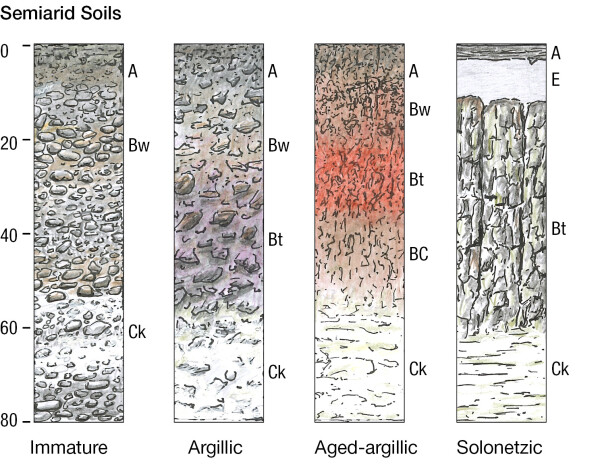Semiarid Soils are dry for most of the growing season. Rain is not sufficient to leach through the soil, so lime and salts accumulate in the lower subsoil. Nutrient levels are relatively high, but the soils must be irrigated to produce a crop.
Semiarid Soils occur in the inland basins of Otago and southern Canterbury, where annual precipitation is less than about 500 mm. They cover 1% of New Zealand.
Soils have high slaking and dispersion potential, and moderate to high bulk densities. Soil structure is usually weakly developed and the soils are erodible.
The soils have low organic matter, cation exchange capacity and low iron and aluminium oxide contents. They are weakly buffered. Soluble salts are present in many soils, calcium carbonate is present in most subsoils. Clay minerals are dominated by illite.
Soils have low biological activity because of droughtiness and low organic matter contents.
Soil orders are divided into soil groups based on variation in factors such as drainage status, parent material, chemical and physical properties:
